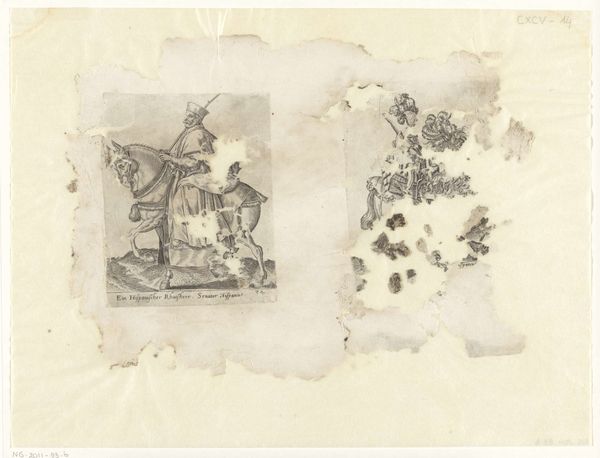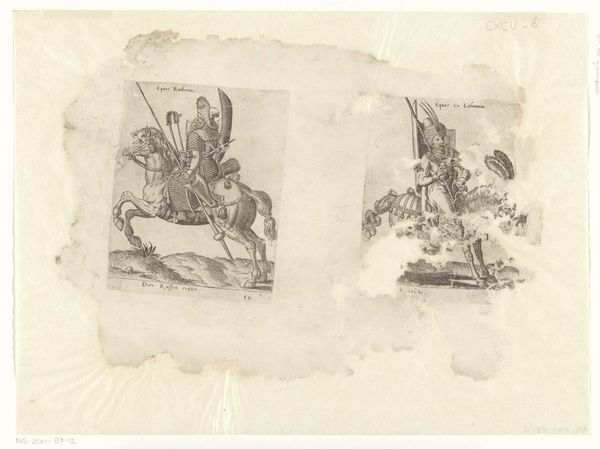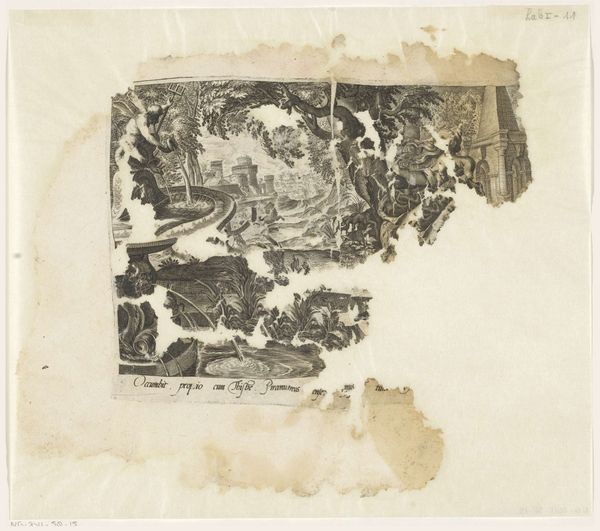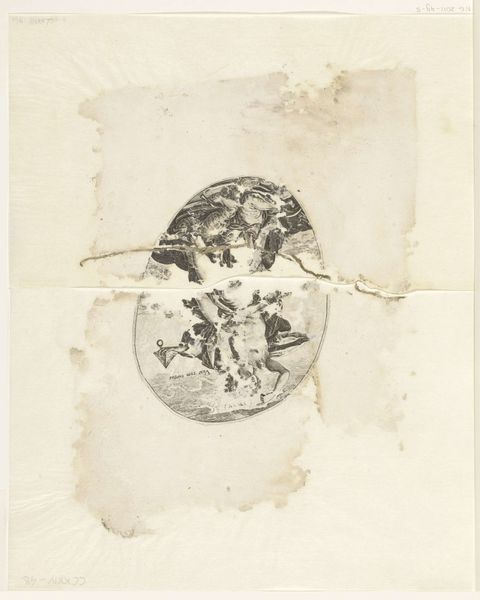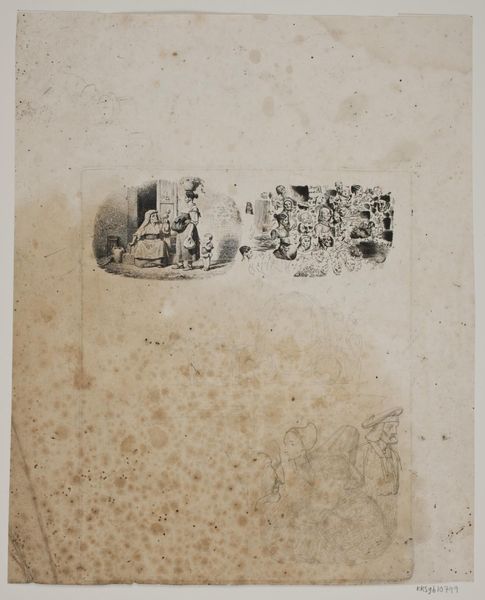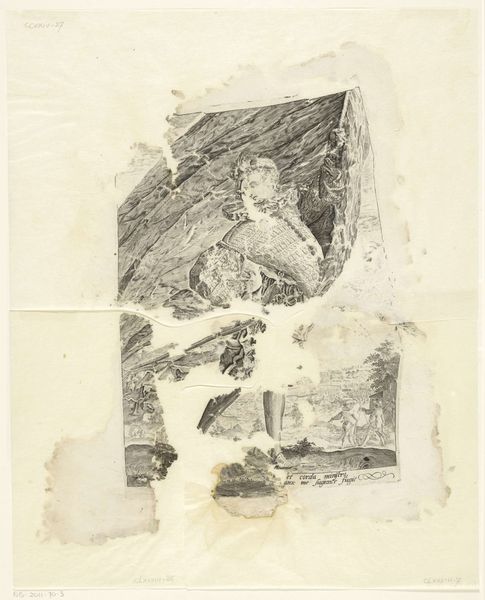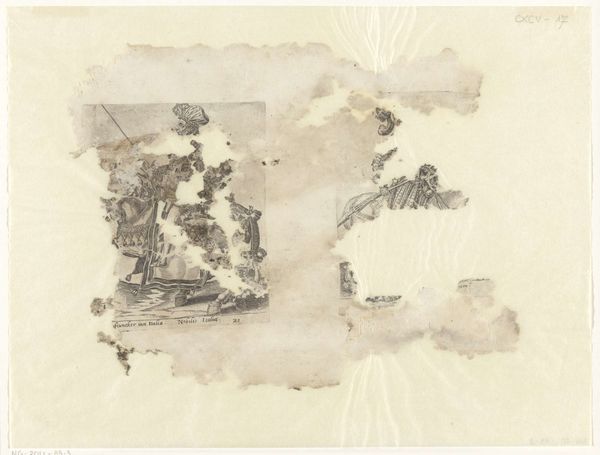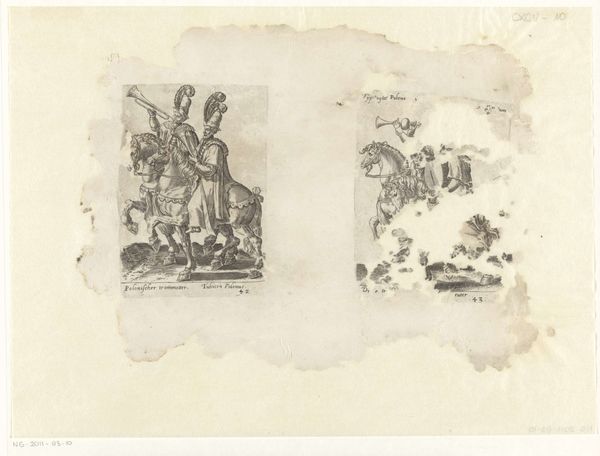
drawing, print, engraving
#
portrait
#
drawing
#
medieval
# print
#
figuration
#
history-painting
#
academic-art
#
engraving
Dimensions: height 237 mm, width 299 mm
Copyright: Rijks Museum: Open Domain
Curator: Looking at this drawing from sometime between 1576 and 1596, we see Abraham de Bruyn's "Engelse hofjonker en Yeoman of the Guard," housed here at the Rijksmuseum. It's an engraving depicting figures of English court life. Editor: Oh, my, this feels like a secret document, unearthed! Despite the damage, the detail in their garments and the horses...it’s bewitching, almost haunting, isn't it? Like peeking into a world obsessed with rigid rank and symbolic power. Curator: Absolutely. The damage ironically underscores the passage of time and how cultural memory persists, albeit fragmented. Consider the Yeoman of the Guard. Their presence signified royal authority, protectors of the crown, a tradition continuing to this day. Editor: The repetition of these armored figures and regal mounts does feel deeply imprinted with tradition. I wonder if the rigidity was a response to turbulent times—a desperate clutching at established hierarchies in a changing world? Or maybe just fabulous wealth and pageantry for its own sake. Curator: I suspect it’s a dance between the two. The court's rigid structure provided a sense of order. The symbolic weight of dress and accoutrements declared status. Court portraiture became a means to project permanence and divine right in response to societal pressures. Editor: Divine right packaged as performative costume! So, what did it mean for De Bruyn, a non-Englishman, to depict them? Was he romanticizing from afar, or providing a knowing commentary? Curator: The artist provides more ethnographic than overtly critical observations. Remember that printmaking circulated imagery widely. De Bruyn probably captured what was considered noteworthy or exotic in different European courts. This print serves as visual shorthand to broadcast cultural archetypes. Editor: Exotic, like visual gossip of the elite! And the figures are almost diagrammatic; this speaks volumes to me of power’s careful performance and propagation. Each uniform, each heraldic flourish intended to signal unwavering control. Curator: Precisely. Symbols became inextricably bound to power structures, solidifying societal memory. Despite being damaged, "Engelse hofjonker en Yeoman of the Guard" echoes, in perpetuity. Editor: I won't forget those spectral figures so easily. Curator: Nor I. A faint, damaged yet captivating glimpse into a bygone world.
Comments
No comments
Be the first to comment and join the conversation on the ultimate creative platform.
